By Dave Richards — I remember watching my first big bike race. I believe it was 1984 or ’85 and I had driven over to Fort Collins, Colorado to visit my sister. She suggested we drive down to Boulder to watch a stage of the Coors Classic. I’d seen snippets of the Tour de France on TV, but the Coors Classic was THE race in the states and I was pretty excited to see some big time racing up close and personal. The stage that day was the Boulder Park Criterium course and I remember the riders aggressively attacking those short, steep climbs only to rip down the fast descents to the park. It was nothing short of amazing and I’ve been hooked on bike racing ever since.
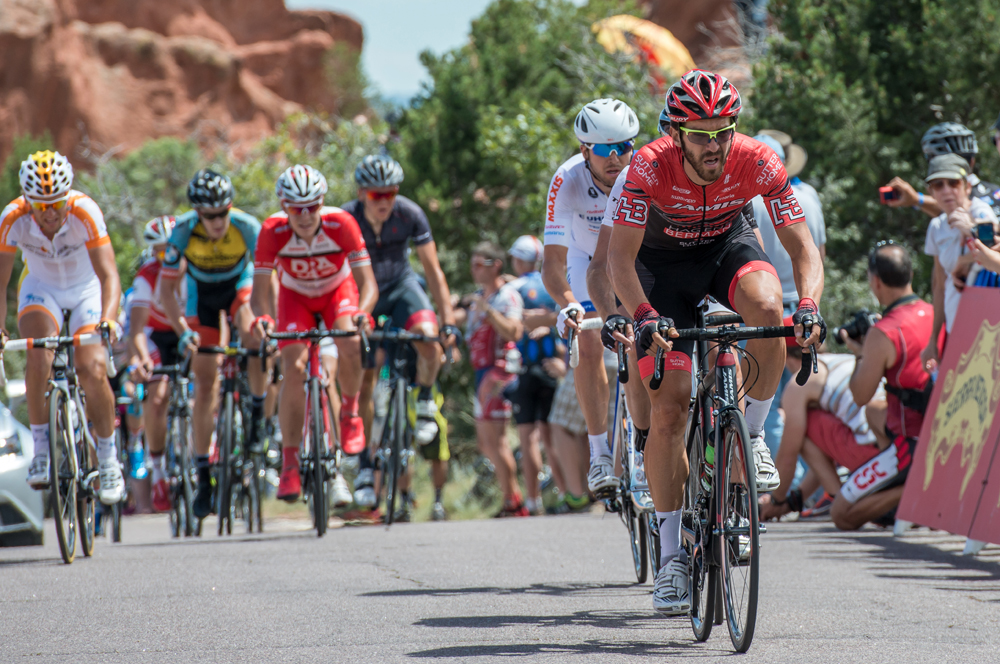
Originally an amateur race known as the Red Zinger, under the ownership of Michael Aisner, the Coors Classic became the premier pro stage race in the US. Eventually it grew into a two week race growing a bit out of control when it started one year in Hawaii and finished in Denver. I believe a stage may have even run through Utah before the final year in 1988.
Fast forward thirty years. A number of big domestic races have come and gone. The Coors Classic is no more, both the San Francisco Gran Prix and the Tour DuPont are gone. Fortunately, we now have three big stage races in the US – Amgen Tour of California, Tour of Utah and the USA Pro Challenge. I’ve been photographing the Tour of Utah for about eight years now, it’s one of the highlights of my summer. When the USA Pro Challenge came online four years ago, I couldn’t help but make mental comparisons to the Coors Classic.
This year I decided it was high time for me to go shoot the USA Pro Challenge and see how it compared to my memories of the Coors and more importantly how it stacked up to our own Tour of Utah. I couldn’t get away for the whole week, so I planned on shooting stages 4-7. I flew “over the hill” to Denver and on Thursday, August 21st and drove down to Colorado Springs for Stage 4 of the Challenge. Another big draw for me was the fact that the ever popular Jens Voigt (Trek) had announced that the Challenge was to be the last race of his career. I just had to see that!
When I checked in for my press credentials, the first thing I noticed was that this race felt “big”. Not Tour de France big, but it felt bigger than Utah. Maybe it was because of the sheer number of rabid cycling fans in Colorado. Or the fact that Paul Sherwen and Phil Liggett, legendary cycling commentators, were on hand to cover the race. One thing is for certain, they have no problem closing down a lot of roads for the races and the locals don’t seem to mind too much. It made it much harder to leapfrog around the course and the press credentials didn’t get me past the cops at the intersections like they do at the Tour of Utah.
Here’s how the race unfolded:
Stage 4 in Colorado Springs was a 70 mile long, four lap circuit race running downtown and up through the National Landmark, Garden of the Gods. The scenery was spectacular and the fans were out in full force on the climb up Ridge Road to the Garden KOM. The peloton caught the breakaway in time for a fast bunch sprint with Elia Viviani (Cannondale) grabbing the win.
Stage 5 started in Woodlawn Park and ran west then north up over the 11,539 foot KOM at Hoosier Pass, followed by a fast descent into the finish at Breckenridge for a length of 104 miles. The rain and wind was heavy on Hoosier Pass and soaked both the riders and the photographers. The massive fans in Breck weren’t deterred by the weather as they cheered on Laurent Didier (Trek) for the stage win.
Stage 6 featured the Vail Time Trial, a course made famous by the Coors Classic. At ten miles long with over 1500 feet elevation gain, topping out at 9,660 feet, it makes for a brutally hard stage. Again the wind and the rain was a factor. It didn’t stop the fans though. Vail Village was jam packed at the start and there was a crazy mob of partying fans just below the barricades at the finish line. Music was blaring and they were dancing in the road as they cheered the riders on. They even had a bubble machine to add to the festivities. It was epic. Tejay van Garderen (BMC) went on to win the stage and also break the previous course record (also set by him) with a fast time of 24:36.
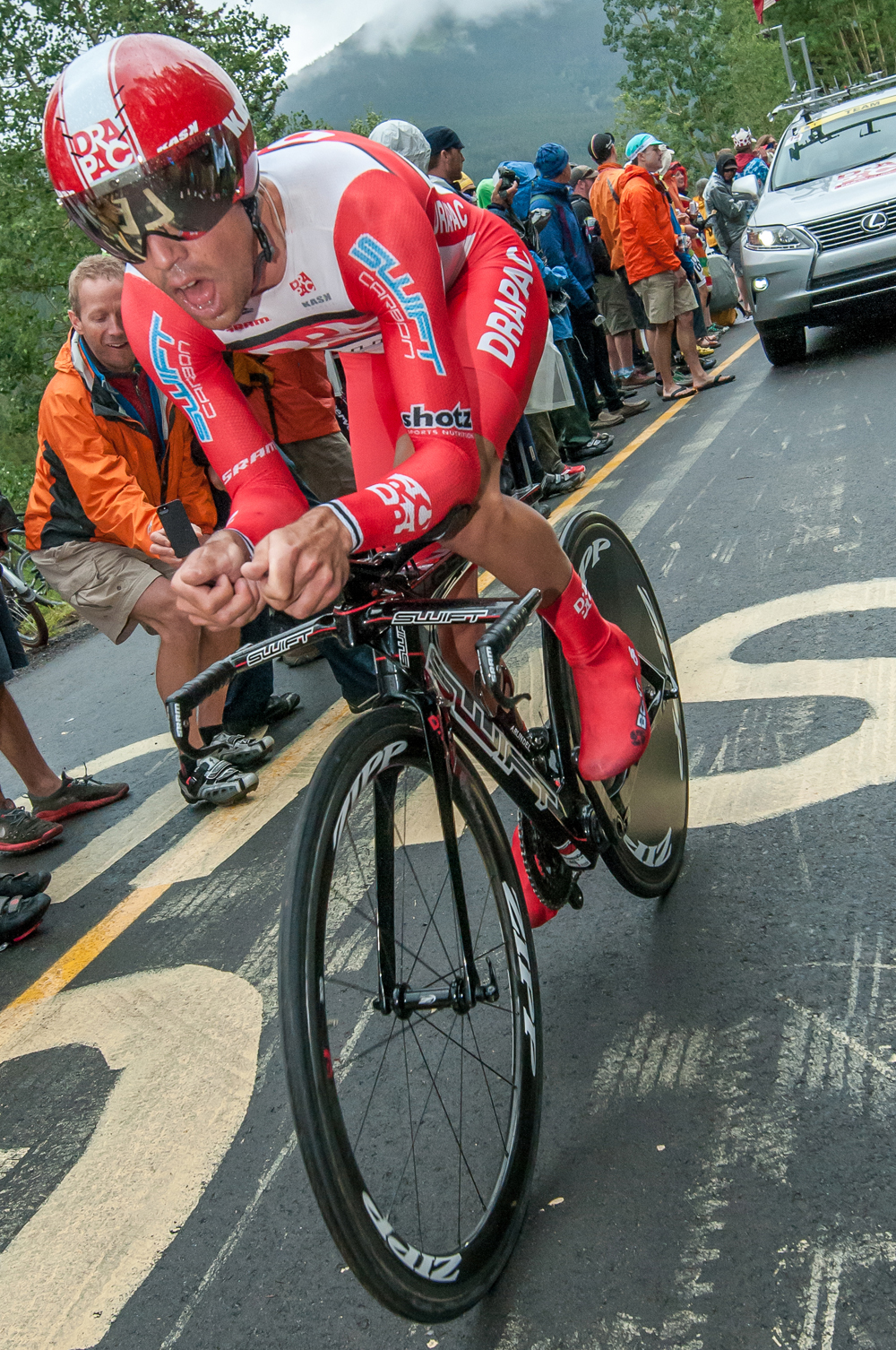
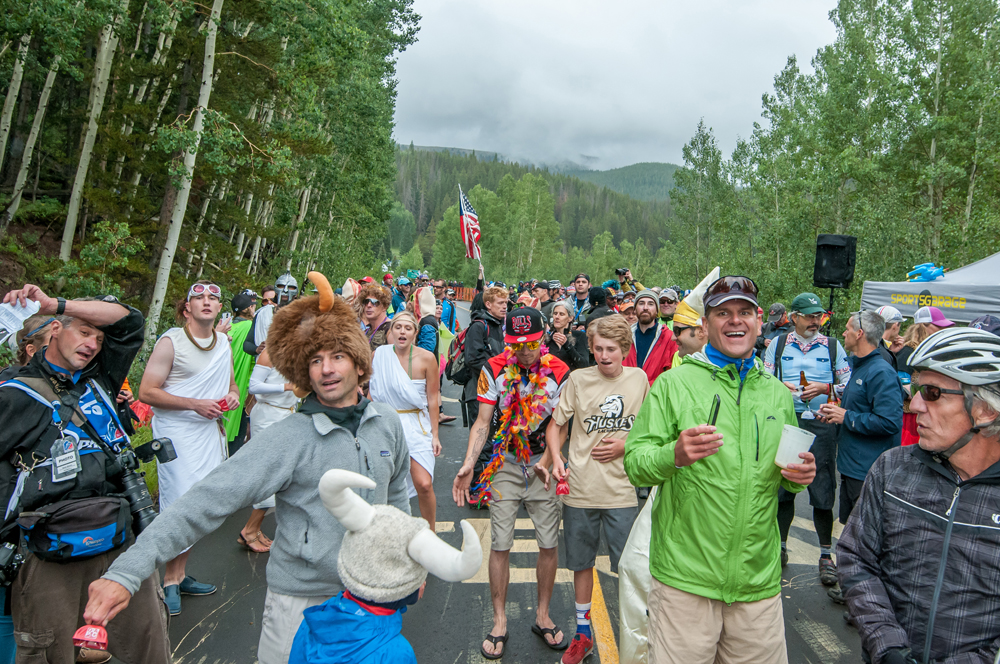
The final Stage 7 started in Boulder, went south through Golden up over Lookout Mountain and then descended into downtown Denver with several finishing circuits out to City Park and back for a distance of 78 miles. As usual, Jens Voigt went on the early attack and managed to stay away until 800 meters to go on the final circuit. A classic Jensie move to cap off a brilliant career. Once the break was caught, Alex Howes (Garmin) took the sprint for the stage win. Tejay took the overall win with 1:32 over Tommy “D” Danielson of Garmin. Sergei Tvetcov (Jelly Belly) finished third at 1:45 down.
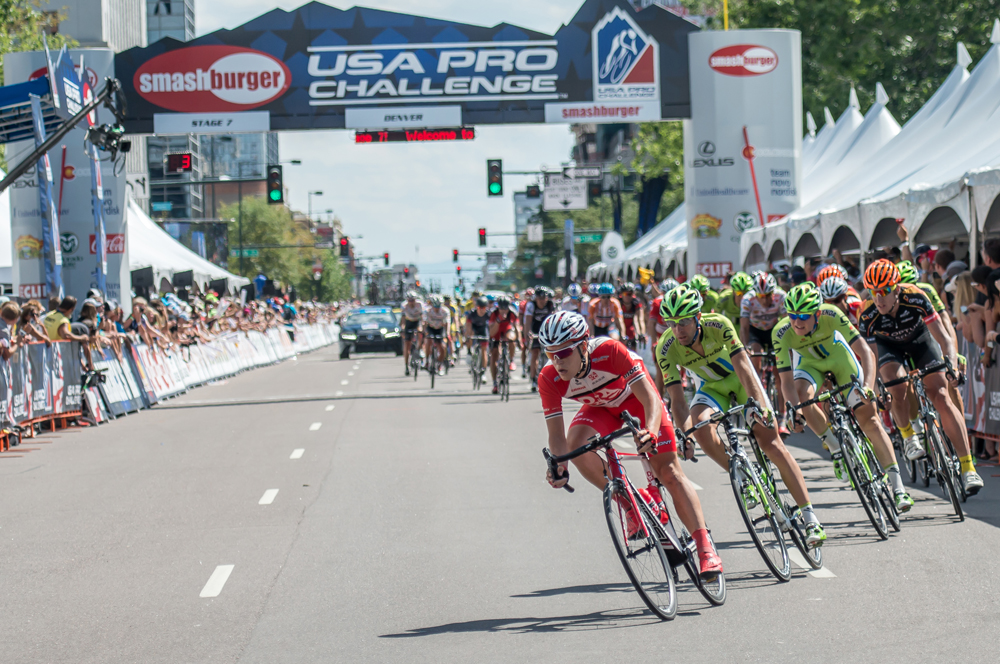
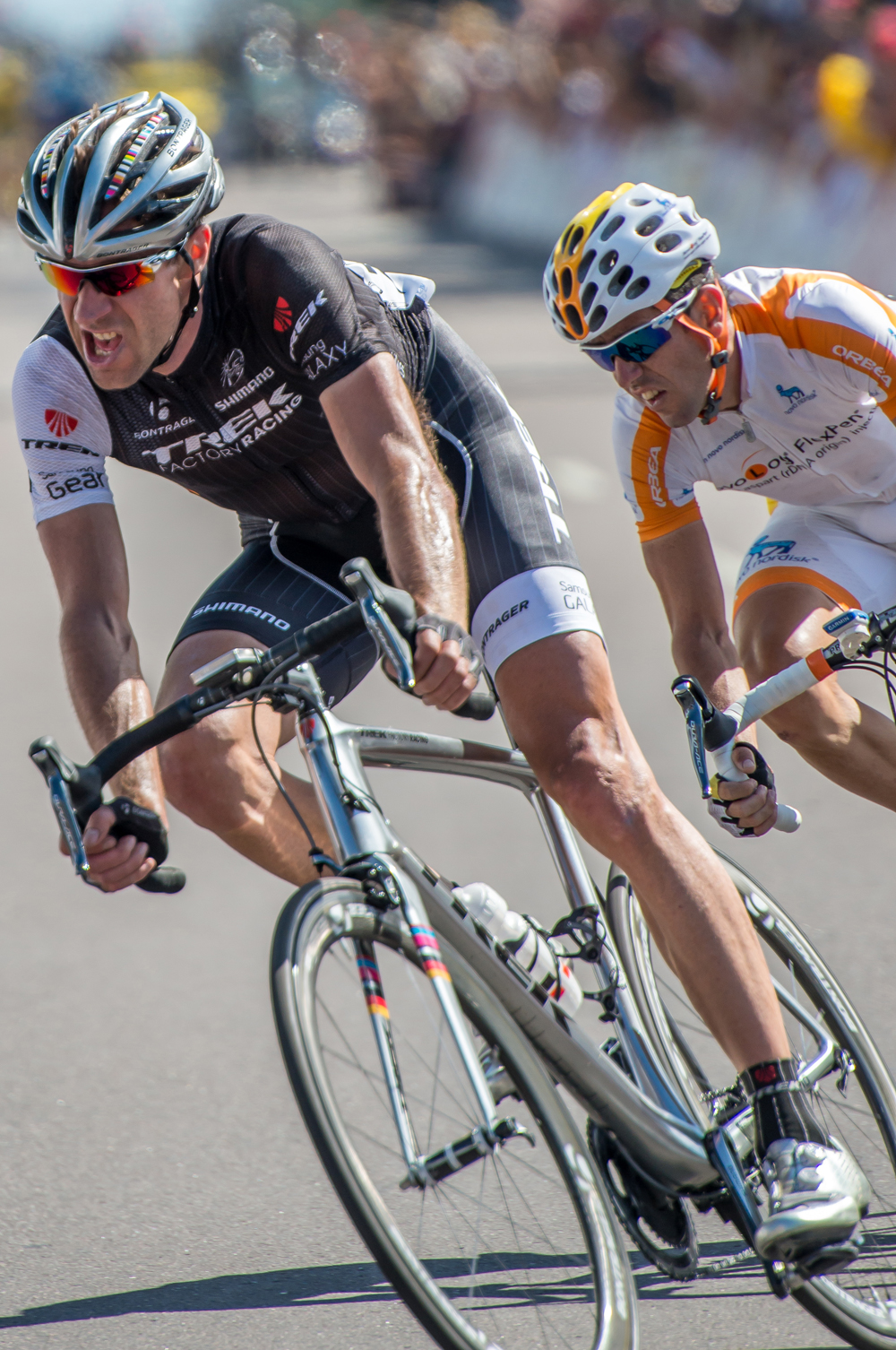
After things settled down in the press room, I tried to collect my thoughts. The race easily felt as exciting as I remember the Coors Classic. It was certainly satisfying to see a major race return to Colorado. Comparing the Challenge to the Tour of Utah, I noted several differences. With steeper climbs and longer stages, the Tour of Utah it lives up to its billing as “America’s Toughest Stage Race”. Colorado has higher elevations and faster racing due to the shorter stages. There are bigger crowds in Colorado, but the Cedar City and Park City fans certainly give Colorado a run for its money in that department. Utah has that incredible scenery racing through the nationaI parks of Southern Utah, which is unique for a bike race. I can’t really say one race is better than the other, they’re just different.
To get another perspective, I talked to a few racers during the week to see how they compared the two. Ben Jacques Mayne (Jamis) who has won the KOM both in Utah and Colorado made some interesting points. He said the steeper Utah climbs had more turns in them so if you got away from the pack they couldn’t see you. In Colorado he said the climbs are straighter and not so steep so the chasers could follow you and be motivated for the catch. I spoke to New Zealand rider James Oram and Park City rider Tanner Putt, both of Bissell Development. They made similar comments about the climbs, length of stages, etc. James noted that in Utah he felt that no one team was super dominant while in Colorado, BMC was so strong for Tejay, they really controlled the race. My friend Johan, 22 year veteran soigneur for Garmin, seemed to take it all in stride. For a guy who has been at it that long, I think it’s just another day at the office. I must admit that he did get excited when I mentioned my love of the spring classics in Belgium, his home country.
Bottom line, these are both fantastic races with their own personalities. We’ll never see the big sprinters like Cav or Kittel race here due to the elevation and climbing, but with these two races back to back on the UCI calendar they’ve become a major draw for the top teams to come to the U.S. and race. I feel fortunate to be here at this time to shoot a few photos, watch some races and enjoy this new golden age of cycling.
Dave Richards is a Utah-based photographer. You can find his work at daverphoto.com and in the pages of Cycling Utah.






